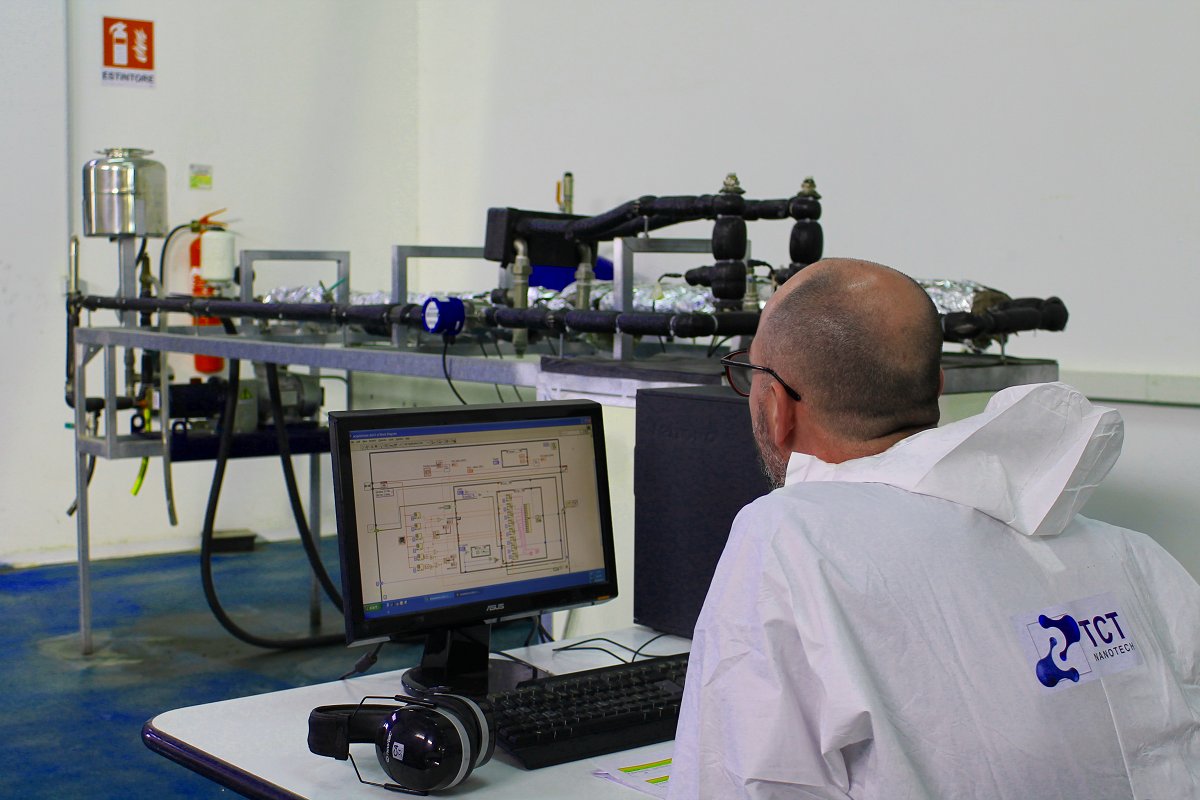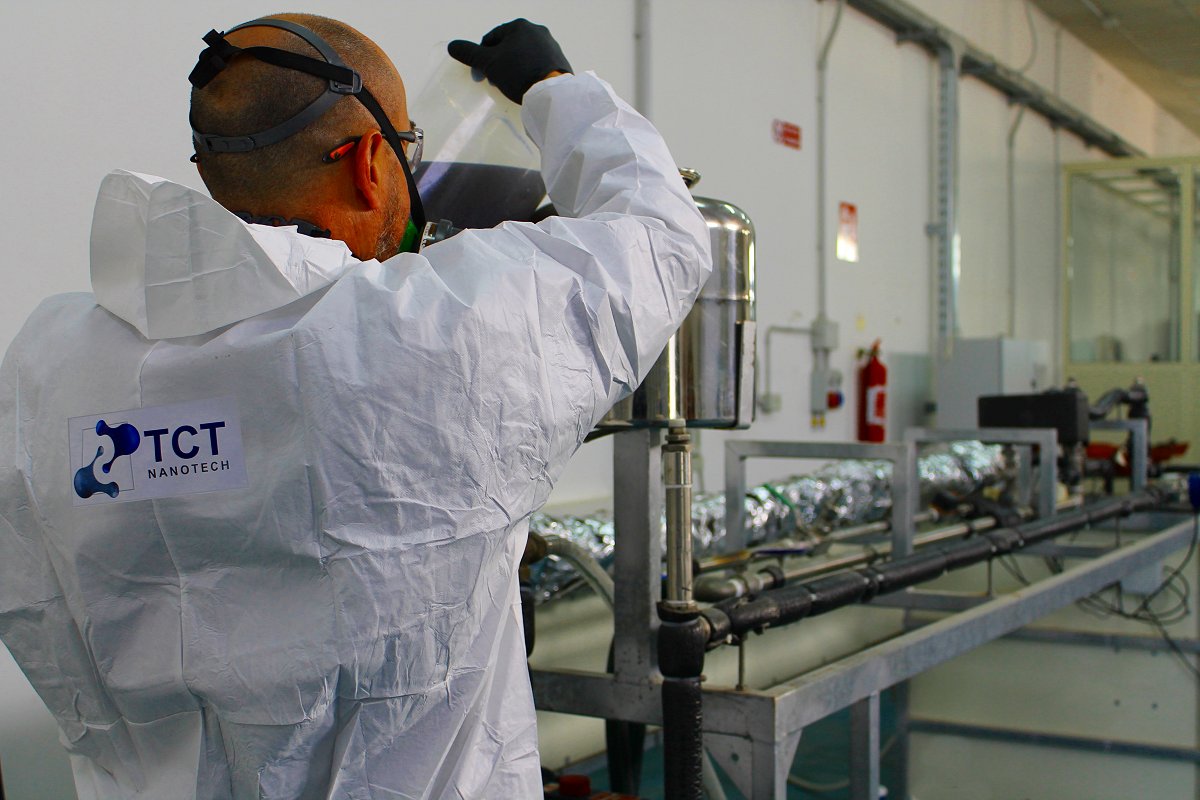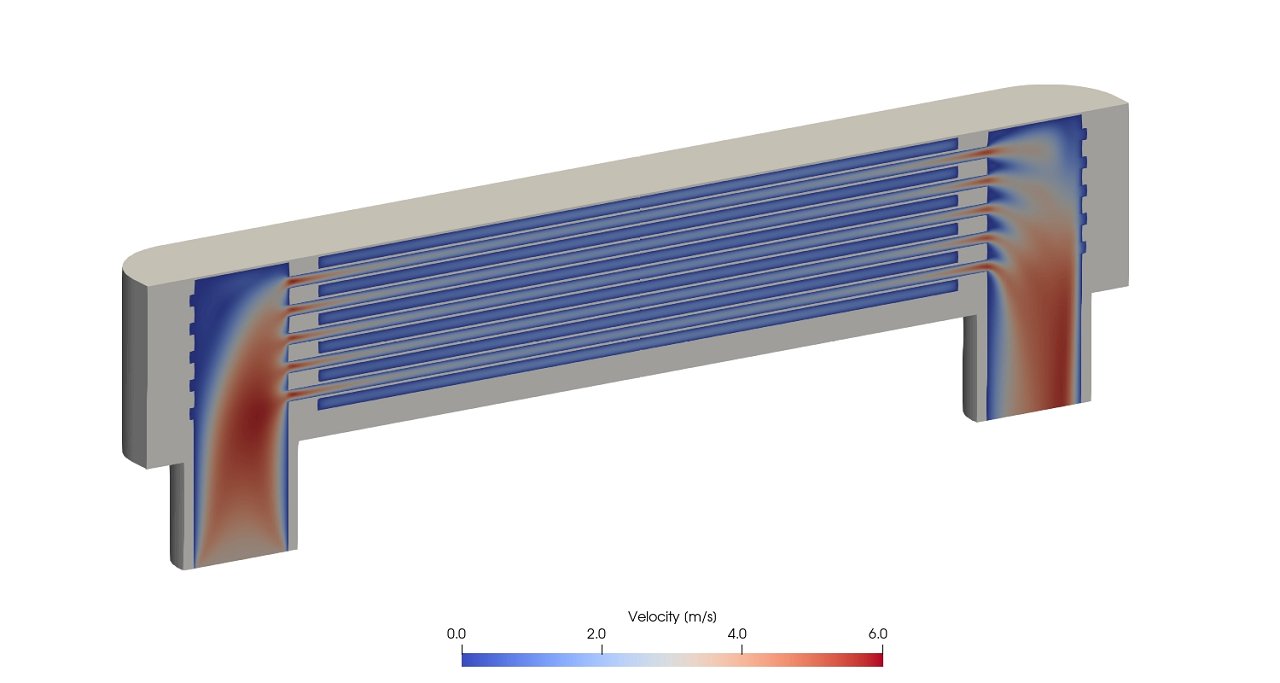Multi-Phase Modelling of Nanofluid Hydronic System
Nanofluids are promising nanotechnology to improve heat transfer efficiency, but their performances depend on a very high number of variables. As a consequence, an expensive trial-and-error approach is typically necessary to set the nanofluid.
The objective of this experiment is to optimize, by advanced numerical models, the nanofluid design and manufacturing process, maximizing the heat exchange in the systems while minimizing the high costs of the production stage and the difficulties in preparing stable nanofluids.
SECTOR: Manufacturing
TECHNOLOGY USED: HPC, CFD Simulations
COUNTRY: Italy
The challenge
In a wide range of industrial applications, hydronic systems use water or a water solution (usually glycol with water) to transfer heat in heating and cooling applications. The HTF Compact solution, which is a dispersion of solid metal oxide nanoparticles in a base fluid, drastically improves heat transfer (25% demonstrated improvement) in such systems. These systems have a wide range of industrial applications.
The nanofluid performance depends on a high number of parameters such as material, size, or concentration. The interaction of these variables makes a clear understanding of their influence on the final nanofluid behavior laborious, requiring expensive trial-and-error for optimal nanofluid design. The increased development time and costs reduces the competitiveness of SMEs like TCT.
To better understand the nanofluid performance, numerical CFD simulations can be used, but applying a simplified single-phase model may result in underestimating the heat exchange performance. A more robust approach considers the nanofluids as a two-phase system where nanoparticles and the base fluid have different properties, but this has a high impact on computational costs and thus requires HPC resources.
The challenge is to optimise the nanofluid design and manufacturing process to maximise the heat exchange in the systems developed by TCT, while minimizing the high costs of the production stage and the time in preparing the stable ad-hoc nanofluid solution. This optimisation will be done using two-phase CFD simulations on HPC resources.
The solution
This experiment developed a multi-phase numerical model to maximise the nanofluid performance that considers all intrinsic parameters (e.g. material, diameter, volume concentration) and how they affect the heat exchange and energy efficiency of the hydronic system. For this model, the use of HPC is essential to both simulate the behaviour of the second phase with its high number of nanoparticles and also their effects. Furthermore, HPC is necessary to create a mesh fine enough for accurate and reliable results, given the complexity of the exchanger geometry. Such numerical models would take up to several weeks to compute on in-house workstations. Using HPC-based simulations allows the partners to drastically reduce the computational time, simulating the thermo-fluid-dynamic process in a few hours and thereby minimising the necessary number of physical tests and associated waste.
Business impact, Social impact, Environmental impact
In all hydronic systems, adding nanoparticles into a base fluid (water or glycol/water) can increase the thermal conductivity and the heat transfer coefficients. This has a positive environmental impact, reducing CO2 emission and electricity usage up to 25%. Moreover, by increasing the heat transfer, the size of heat exchangers can be reduced, saving production costs. Furthermore, a smaller heat exchanger requires reduced pump pressure, saving electric energy.
Benefits
- TCT expects to reduce: time-to-market by 66% (to only 2 months), design costs by 50% (about EUR 100,000 saving per year), material waste by 70% (about EUR 60,000 saving per year), and energy power by 15% (about EUR 150,000 saving per year).
- CETMA expects the success story to lead to new R&D projects and consultancy services with an increase in revenue of about EUR 50,000 per year.
- CINECA aims to become a TCT HPC resource provider at an estimated EUR 20,000 per year in revenue and to exploit the success story to attract new customers for an additional increase in revenue of the same order.
Organisations involved:
End-user: TCT srl
Technology expert: CETMA
HPC Centre: CINECA
Partner CINECA is part of the Italian NCC.
Success Story video




